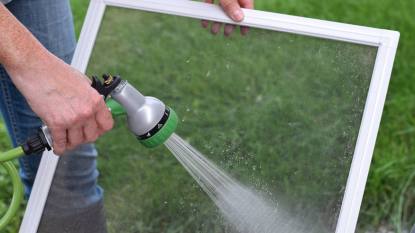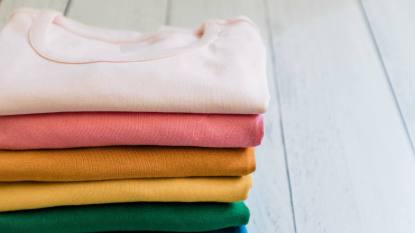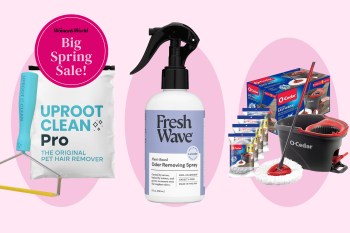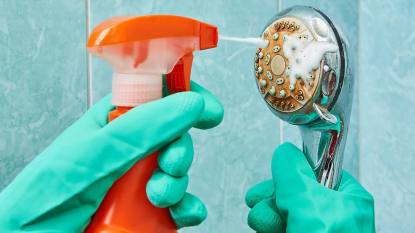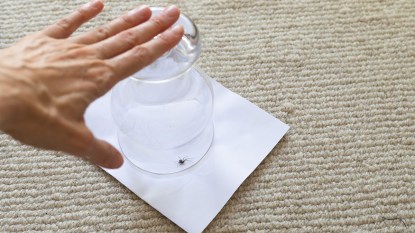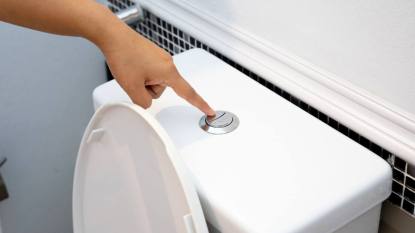Do You ‘Follow the Grain’ When You Clean Stainless Steel? If Not, You’re Likely Scratching It, Cautions Queen of Clean
Non-toxic solutions to every stainless steel problem + the microfiber trick that creates the perfect finish

Refrigerators, ranges, stovetops, dishwashers, range hoods…these days stainless steel appliances rule the kitchen design world — and for good reason! Not only does stainless steel offer sleek and modern style to any kitchen area, but it’s super durable and rust resistant thanks to its elemental makeup. The only hitch with this material: It attracts fingerprints and smudges. So we asked cleaning experts the most common questions related to cleaning this popular appliance material. Like, can you use bleach on stainless steel? Continue reading for all the need-to-know info and other surprising cleaning tips.
Is stainless steel easy to clean?
“Stainless steel is definitely prone to fingerprints, smudges and other splatters, but it’s simple to clean,” assures professional cleaner Lynsey Crombie, known as The Queen of Clean, and author of The 15-Minute Clean: The Quickest Way to a Sparkling Home. Her two important keys that make cleaning stainless steel easy:
1. “I always say to ‘follow the grain’ when wiping and cleaning stainless steel to avoid unnecessary scratches — many people don’t know this.” And she’s right! Stainless steel does have a grain similar to a wood floor or table, but it’s not as easy to pinpoint. If you can’t see the lines in the stainless steel, try feeling for them with your fingers. Still can’t find it? Try taking a soft microfiber cloth and gently rub horizontally and then vertically. You should feel a very slight resistance or roughness as you go against the grain.
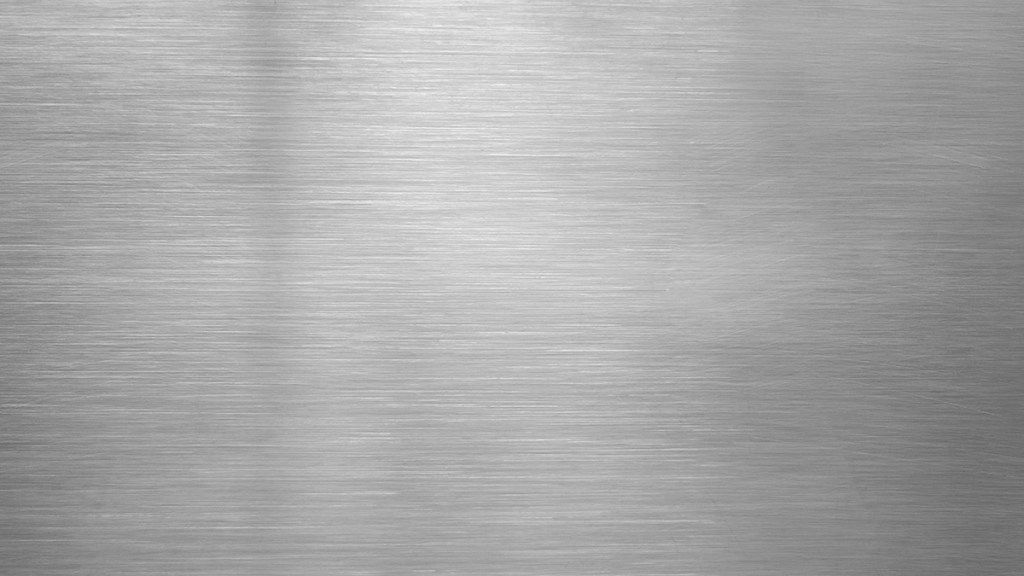
2. Steer clear of using abrasive sponges and scrubbers (like steel wool) when cleaning stainless steel as they can scratch and harm the surface. And read on to discover if you can use bleach on stainless steel.
How to clean stainless steel appliances
While there are plenty of products on the market that clean stainless steel, you can easily clean it yourself using items from around the house — for pennies!
For a quick overall cleaning: Grab the dish soap
“My favorite at-home cleaning ‘recipe’ for stainless steel is a cinch to make,” says Crombie. All you need is mild liquid dish soap, soft cloths and some baby oil.
Dish soap gently yet effectively cuts through grease and oil splatters and cleans surfaces well while a quick baby oil ‘buff’ adds shine. Here, her easy how-to:
- Start by dipping a soft microfiber cloth in to a warm soapy water (a simple mixture of mild dish soap and water works well). Wipe the appliance down with the soapy mixture in the direction of the grain; repeat if needed.
- Rinse excess residue with water. Then, dry off the surface with another dry microfiber cloth.
- For a pristine and sparkling finishing touch, buff the appliance: “Add a tiny drop of baby oil to a dry microfiber cloth and simply ‘buff’ the surface of your stainless steel appliance — this creates the perfect shine and finish!” (Click through for more brilliant ways to use baby oil!)
Looking to eradicate food grime? Opt for vinegar + lemon juice
Fill a spray bottle with equal parts water, vinegar and lemon juice, shake it up and spray the stainless steel surface. Then, wipe down with a microfiber cloth. Repeat, if needed.
How it works: White vinegar contains a mild acid which will cut through food grime without smearing it further. Plus, it’s an all-natural and nonabrasive sanitizer. Lemon juice also naturally cuts through grime while adding a pleasant scent to the homemade cleaner.
Looking for a sparkling deep-clean? Try rubbing alcohol
Pour some rubbing alcohol onto a cloth and use it to wipe the appliance, rubbing with the grain to avoid scratching the surface.
How it works: The alcohol will cut through an array of stains and marks (from fingerprints to grease to acidic stains like ketchup), leaving your appliance spotless and sparkling.
Looking to remove old caked-on stains? Use some baking soda
Mix one part baking soda with one part warm water until it creates a paste. Apply paste to old stains. Let sit for 15 to 20 minutes depending on how old the stain is. Wipe the baking soda paste with a damp microfiber cloth in the direction of the grain. Remove excess baking soda residue with another dry cloth.
How it works: The abrasive paste works to lift old stains and oil from the surface without scratching it.
Looking for a 1-ingredient cleaner? Club soda to the rescue
Whether you’re pouring the club soda directly on your stainless steel surface and wiping or pouring it into a bottle, spraying on and wiping, this bubbly beverage is a powerhouse stainless cleaner!
How it works: Thanks to its carbonation, the aeration actively works to lift stains, dark spots and more. Bonus: Club soda is a one-ingredient cleaning solution that eradicates residues and leaves a nice shine, too.
Can you use bleach on stainless steel?
“The answer is no — you cannot use bleach on stainless steel,” says Kate Jakubas, a professional metallurgist (a ‘materials scientist’ who specializes in specific metals such as steel, aluminum, iron, and copper). There are many things you can use to clean stainless steel — from store-bought products to everyday household ingredients — but bleach is not one of them! “Bleach is just too harsh…it also interferes with the naturally-occurring oxide layer that protects the stainless steel from rusting,” she explains. “When you use bleach on stainless steel, especially if you leave it to soak or don’t rinse and dry thoroughly, you end up with ‘pitting’ or holes of rust in the material that cannot be repaired.”
If you opt to buy a store-bought stainless cleaner, just check to be sure it does not contain any traces of bleach or chlorine in the ingredients.
How to clean different types of stainless steel
“In general, cleaning stainless steel can be quite inconsistent and the reason why is because each finish is different depending on the brand and the type of steel that was used in the manufacturing process,” says professional cleaner Thomas Hernandez of Clean With Confidence. His advice? Try out a few areas first with your cleaner of choice. “The only way you are really going to find out which cleaning method works best for you and your appliance is to experiment with a little trial and error.”
For more pointers and a visual step-by-step, watch Hernandez’s video below:
To learn more about stainless steel click through these stories:
How To Clean Stainless Steel Kitchen Appliances and Pots
11 Brilliant Uses For Bar Keepers Friend — Stainless Steel Is Only The Beginning
How to Remove Fingerprints on Anything – Cleaning Pros Reveal Cheap + Easy Fixes


